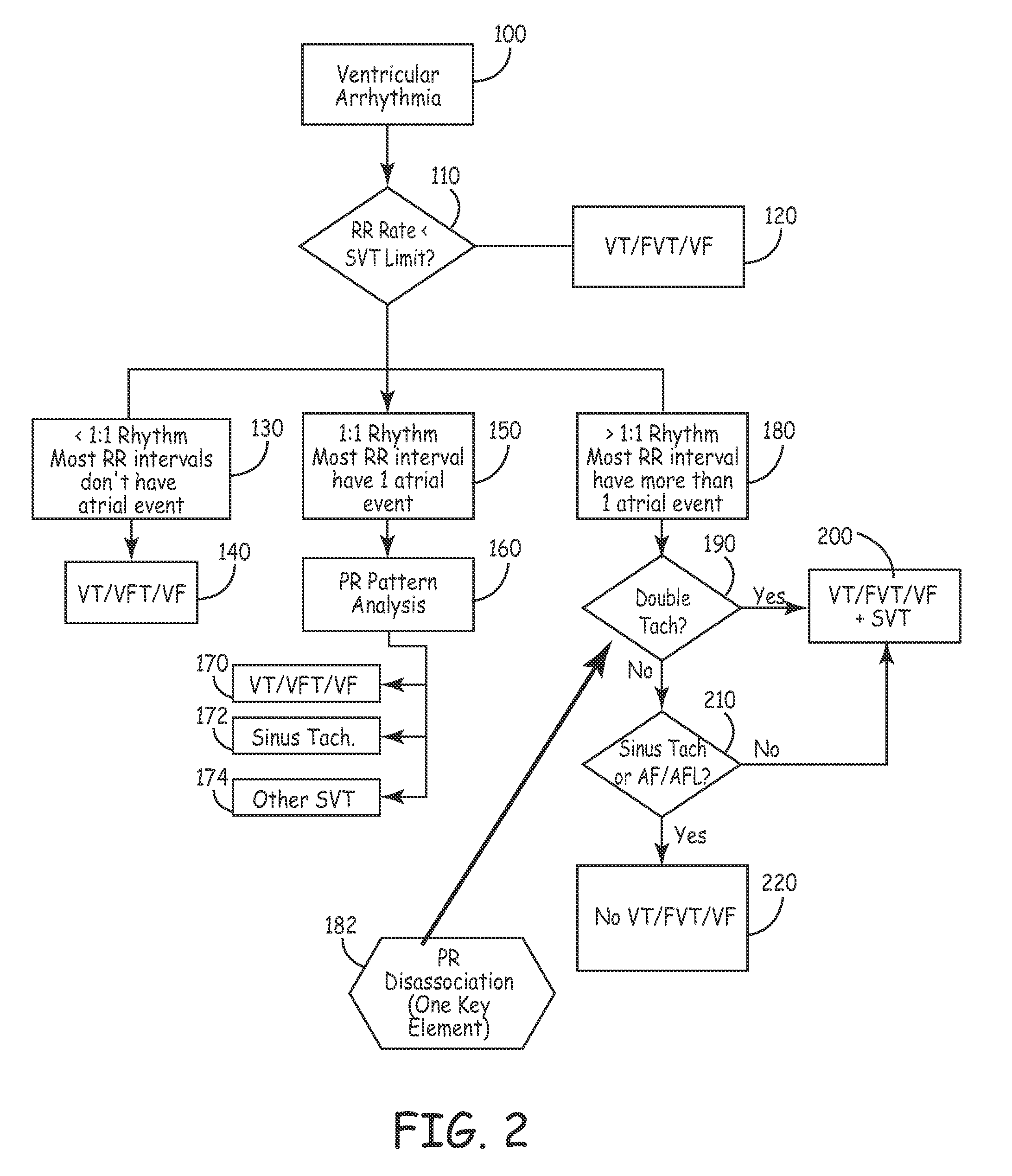System and method for arrhythmia discrimination with atrial-ventricular dissociation
a technology of atrial-ventricular dissociation and arrhythmia discrimination, which is applied in the field of implantable cardioverter defibrillators, can solve the problems of correspondingly high ventricular rate, abnormally fast ventricular arrhythmias that may conduct retrograde, and difficulty in identifying their true nature and origin
- Summary
- Abstract
- Description
- Claims
- Application Information
AI Technical Summary
Benefits of technology
Problems solved by technology
Method used
Image
Examples
Embodiment Construction
[0014]FIG. 1 is a block diagram of an ICD 10 and the various operably interconnected components and modules. ICD 10 includes a housing 12 containing a microprocessor 14, memory 16, and a power supply 18, such as a battery. Also included is a pulse generator 20, a high energy therapy circuit 22 for providing defibrillation, a signal processor 24 to process data received via an atrial input 26 and a ventricular input 28 according to algorithms retained in memory 16, encoded into firmware or otherwise provided. An atrial output module 30 and ventricular output module 32 are provided to control delivered therapies, typically via atrial lead(s) 34 and ventricular lead(s) 36. FIG. 1 is not meant to illustrate each component of an ICD as this is generally well known in the art. It should be appreciated that the present invention may be utilized in a classic ICD having a housing implanted subcutaneously or submuscularly with lead(s) extending into the heart transvenously or extending to an ...
PUM
 Login to View More
Login to View More Abstract
Description
Claims
Application Information
 Login to View More
Login to View More - R&D
- Intellectual Property
- Life Sciences
- Materials
- Tech Scout
- Unparalleled Data Quality
- Higher Quality Content
- 60% Fewer Hallucinations
Browse by: Latest US Patents, China's latest patents, Technical Efficacy Thesaurus, Application Domain, Technology Topic, Popular Technical Reports.
© 2025 PatSnap. All rights reserved.Legal|Privacy policy|Modern Slavery Act Transparency Statement|Sitemap|About US| Contact US: help@patsnap.com



